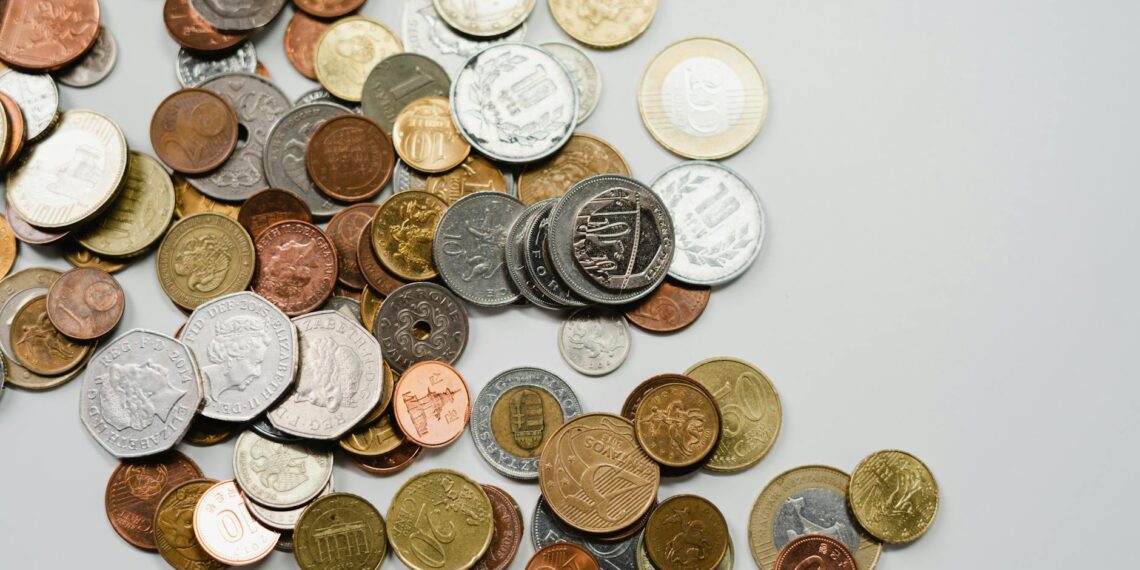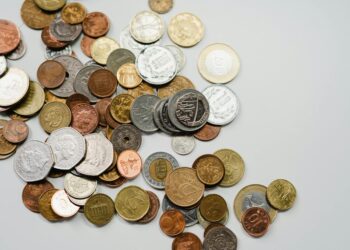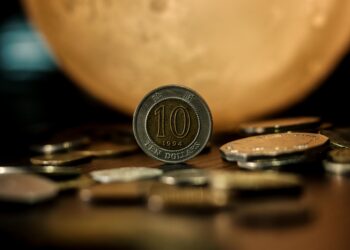The fascinating world of numismatics encompasses countless denominations, but few are as intriguing as the 20 coin variants found across different currencies worldwide. These coins, representing 20 units of their respective currencies, tell compelling stories of economic history, design evolution, and cultural significance. From the short-lived American twenty-cent pieces to the modern Euro 20-cent coins circulating today, each 20 coin carries unique characteristics that captivate collectors and historians alike.
The American Twenty-Cent Piece: A Brief but Notable Chapter
Historical Context and Creation
The US Twenty Cent Piece represents one of the most fascinating yet short-lived denominations in American monetary history. Minted from 1875 to 1878, these coins emerged during a period of significant economic change in post-Civil War America. The primary motivation behind creating this 20 coin was to address a critical shortage of smaller denominations, particularly in the rapidly expanding Western United States.
During the 1870s, the Western territories experienced unprecedented growth due to mining booms, railroad expansion, and increased settlement. However, these regions faced a persistent shortage of small-denomination coins needed for everyday transactions. The twenty-cent piece was conceived as a practical solution to bridge the gap between the dime (10 cents) and the quarter (25 cents).
Design and Specifications
The American twenty-cent piece featured a distinctive design that, ironically, contributed to its downfall. The coin displayed:
- Obverse: Liberty seated, holding a shield and olive branch
- Reverse: An eagle with outstretched wings
- Composition: 90% silver, 10% copper
- Weight: 5 grams
- Diameter: 22 millimeters
The Fatal Flaw
Despite good intentions, the 20 coin suffered from a critical design flaw that sealed its fate. The twenty-cent piece was remarkably similar in size and appearance to the quarter dollar, leading to widespread confusion among the public. This similarity resulted in frequent mix-ups during transactions, causing frustration for both merchants and consumers.
The confusion was exacerbated by the fact that both coins featured similar Liberty Seated designs and had comparable dimensions. In poor lighting conditions or during hurried transactions, distinguishing between the two became nearly impossible for many people.
Mintage and Rarity
The production numbers for American twenty-cent pieces were relatively modest:
- 1875: 1,155,000 pieces
- 1876: 14,640 pieces
- 1877: Proof only (510 pieces)
- 1878: Proof only (600 pieces)
Today, these coins are highly sought after by collectors due to their brief production run and historical significance, making them valuable additions to any numismatic collection.
European 20-Cent Coins: Modern Monetary Unity
The Euro 20-Cent Coin
The Euro 20-cent coin represents one of the most successful modern implementations of a 20 coin denomination. Introduced in 2002 alongside the Euro currency, these coins serve millions of people across the Eurozone daily.
#### Design Characteristics
Euro 20-cent coins feature:
- Composition: Nordic gold (copper, aluminum, zinc, tin)
- Weight: 5.74 grams
- Diameter: 22.25 millimeters
- Distinctive edge: Smooth with seven indentations
#### National Variations
One of the most fascinating aspects of Euro 20-cent coins is that while they share common specifications, each participating country designs its own national side. This creates a diverse collection of 20 coin variants including:
- Austria: Features Mozart, Secession building, or alpine flowers
- Belgium: Displays the royal monogram or coat of arms
- Finland: Shows the heraldic lion
- France: Features Marianne, the symbol of the French Republic
- Germany: Displays the Brandenburg Gate
- Greece: Shows Ioannis Kapodistrias, first Greek head of state
- Italy: Features Umberto Boccioni’s “Unique Forms of Continuity in Space”
Circulation and Usage
Euro 20-cent coins play a crucial role in everyday European commerce. Unlike their American predecessor, these coins have achieved widespread acceptance and regular use. Their distinctive golden color and size make them easily distinguishable from other denominations, avoiding the confusion that plagued the American twenty-cent piece.
British 20 Pence: The Heptagonal Innovation
Introduction and Design Philosophy
The British 20 pence coin represents a unique approach to 20 coin design and functionality. Introduced in 1982, this denomination filled a gap in the British currency system and introduced an innovative seven-sided (heptagonal) shape to prevent confusion with other coins.
Distinctive Features
The British 20p coin stands out due to several unique characteristics:
- Shape: Heptagonal (seven-sided) with curved edges
- Composition: Copper-nickel (since 1982), nickel-plated steel (from 2012)
- Weight: 5 grams
- Design: Features the crowned Tudor rose
Evolution and Modernization
The British 20 pence has undergone several design changes throughout its history:
- Original design (1982-2008): Featured the crowned Tudor rose
- Shield design (2008-present): Part of the Royal Shield series
- Material change (2012): Switched to nickel-plated steel for cost efficiency
Commonwealth 20-Cent Coins
Australian 20-Cent Coin
Australia’s 20-cent coin has been a staple of the currency since decimal conversion in 1966. This 20 coin features:
- Composition: Copper-nickel
- Design: Platypus on the reverse, Queen’s portrait on obverse
- Significance: Represents one of Australia’s most recognizable native animals
New Zealand 20-Cent Coin
New Zealand’s version of the 20 coin shares similarities with its Australian counterpart but features distinctly Kiwi elements:
- Design: Kiwi bird on the reverse
- Cultural significance: Represents New Zealand’s national bird
- Circulation: Widely used in daily transactions
Asian 20-Cent Denominations
Hong Kong Twenty-Cent Coin
Hong Kong’s 20-cent coin represents the territory’s unique monetary position:
- Design: Features the Bauhinia flower, Hong Kong’s floral emblem
- Composition: Brass-plated steel
- Significance: Reflects Hong Kong’s distinct identity within the Chinese monetary system
Philippine 20-Peso Coin
The Philippines features a 20-peso coin that, while representing a different base unit, shares the “20” denomination significance:
- Recent designs: Feature national heroes and cultural symbols
- Composition: Various alloys depending on the year
- Cultural importance: Reflects Philippine history and heritage
Collecting 20 Coins: A Numismatic Perspective
Investment Potential
Collecting 20 coin varieties offers several advantages for numismatists:
- Historical significance: Each coin represents specific periods in monetary history
- Relative rarity: Some variants, particularly the American twenty-cent pieces, are quite scarce
- Design diversity: Wide range of artistic styles and cultural representations
- Affordability: Many modern variants remain accessible to beginning collectors
Key Factors for Collectors
When collecting 20 coin specimens, consider:
- Condition and grading: Higher grades command premium prices
- Mintage numbers: Lower mintage often correlates with higher value
- Historical context: Coins from significant periods carry additional interest
- Error varieties: Minting errors can significantly increase value
Building a Collection
A comprehensive 20 coin collection might include:
- Historical pieces: American twenty-cent coins from the 1870s
- Modern circulation coins: Euro, British, and Commonwealth variants
- Commemorative issues: Special releases marking significant events
- Error coins: Varieties with minting mistakes or anomalies
Economic Impact and Monetary Policy
Role in Modern Commerce
Contemporary 20 coin denominations serve important functions in their respective economies:
- Transaction efficiency: Bridge gaps between smaller and larger denominations
- Cost-effectiveness: Reduce the need for multiple smaller coins in transactions
- Public acceptance: Generally well-received when properly designed and implemented
Lessons from History
The contrasting fates of various 20 coin implementations offer valuable insights:
- Design clarity: Coins must be easily distinguishable from other denominations
- Public education: Successful introduction requires adequate public awareness campaigns
- Economic necessity: Denominations must fill genuine gaps in the currency system
Future of 20-Cent Denominations
Digital Currency Impact
As digital payments become increasingly prevalent, the future of physical 20 coin denominations faces new challenges:
- Reduced cash usage: Electronic transactions may decrease demand for physical coins
- Collector interest: Physical coins may become primarily collectible items
- Cultural preservation: Coins serve as tangible links to monetary history
Potential Innovations
Future 20 coin designs might incorporate:
- Enhanced security features: Advanced anti-counterfeiting measures
- Sustainable materials: Environmentally friendly composition options
- Smart technology: Integration with digital payment systems
Conclusion
The story of 20 coin denominations worldwide reveals the complex interplay between practical monetary needs, design considerations, and public acceptance. From the failed American experiment of the 1870s to the successful modern implementations across Europe and the Commonwealth, these coins demonstrate how thoughtful design and proper implementation can determine a denomination’s success or failure.
Whether you’re a serious numismatist, a casual collector, or simply someone interested in monetary history, 20 coin varieties offer fascinating insights into the evolution of currency systems worldwide. Each coin tells a unique story of its time and place, making them valuable not just as collectibles, but as tangible pieces of human economic history.
The continued circulation of various 20 coin denominations today proves that when properly designed and implemented, these coins can serve essential roles in modern monetary systems while maintaining their appeal to collectors and historians for generations to come.











Is 20 pound coin legal?
Whilst the £20 has been deemed legal tender it has not yet been designed to be a circulating coin. That means you can still use it to settle a debt in court, but you will probably find that your corner shop or your bank will not accept a £20 coin in exchange for goods or services.
Do 20 dollar coins exist?
From my experience, Although the 20 dollar coin was minted from 1849 to 1933, there are two versions: the 20 dollar Longacre coin, minted from 1849 to 1907, the 20 dollar Saint-Gaudens coin, minted from 1907 to 1933.
What is a $20 coin worth?
The value of a Saint-Gaudens $20 Coin can vary significantly based on the coin’s mint year and overall condition. For example, a 1907 Saint-Gaudens in good condition may sell for around $1139 or close to the current price of gold. A 1908-S, on the other hand, may sell for over $8600 if in uncirculated condition.